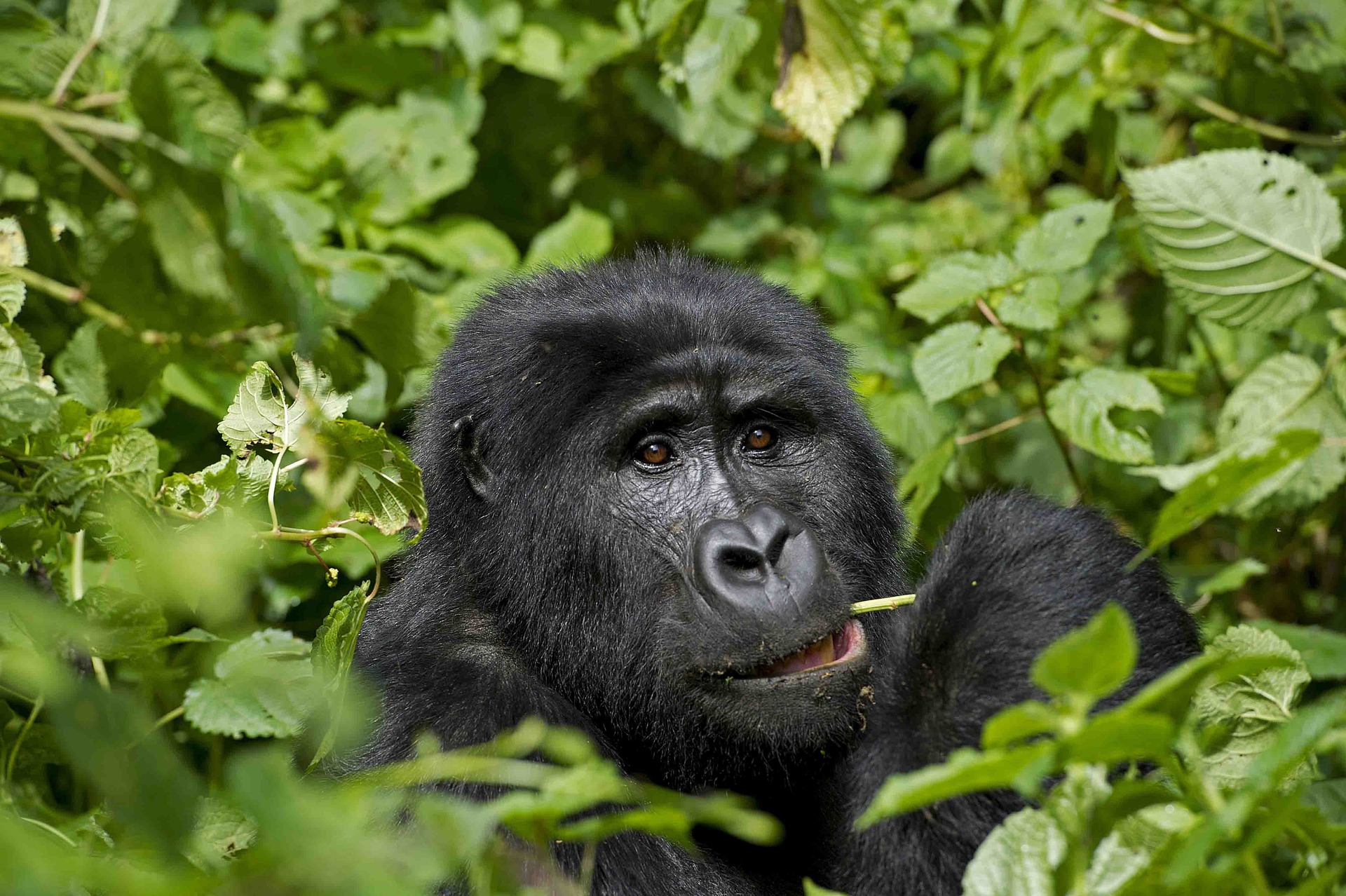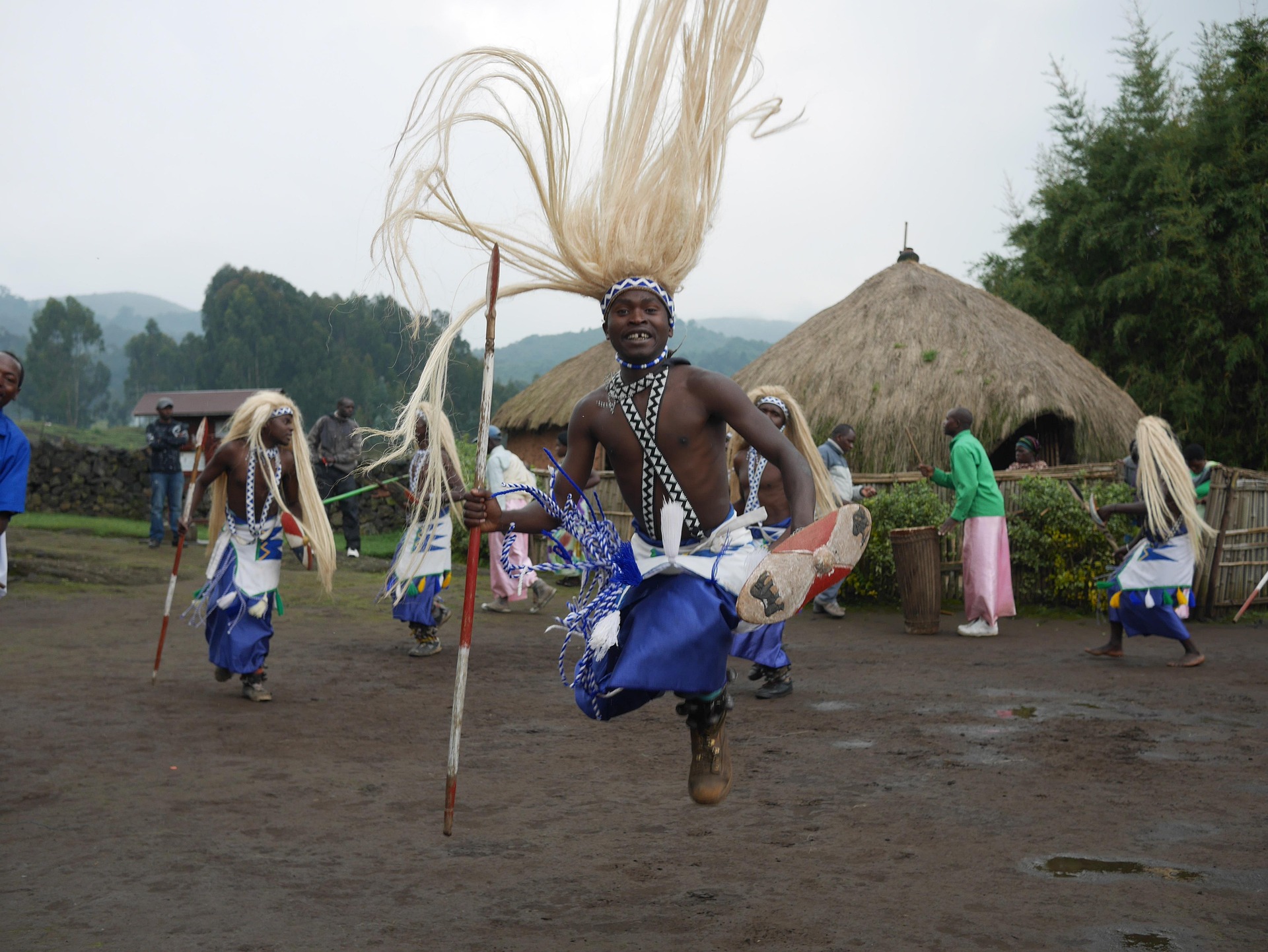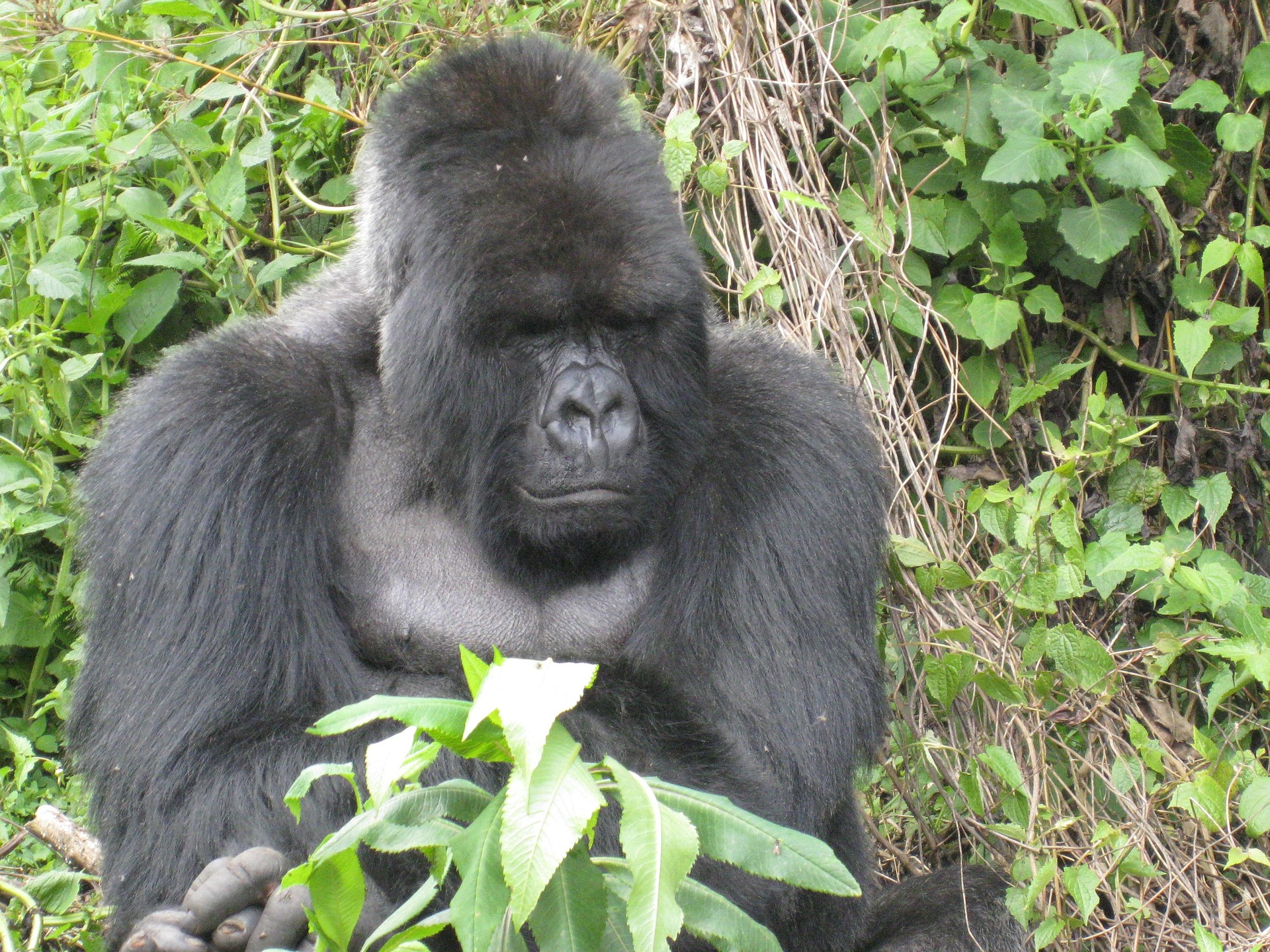Wondering what the Rwanda landscape comprises? Look no further; this article encompasses all the cures to your curiosity!
With a total area of 26,338 km², Rwanda is located south of the Equator in Central/Eastern Africa, bordered by Uganda (north), Tanzania (east), Burundi (south), and the Democratic Republic of Congo (west). It is home to 12 million people and boasts a unique environment and rich cultural heritage, making it a special destination.
Rwanda, the “Land of a Thousand Hills,” is a breathtakingly beautiful country in East Africa, characterized by rolling hills, majestic mountains, and serene waterscapes.
With diverse ecosystems and safari parks like Volcanoes and Akagera, the nation’s landscape supports a wide range of flora and fauna, making it a haven for nature lovers.
This is what the Rwandan landscape encompasses!
Rwanda National Parks
Rwanda has only four game parks, which are among the most popular and frequently visited landscapes in the country.
Volcanoes National Park

Volcanoes National Park, located in northwest Rwanda’s Musanze district, protects the Virunga Mountain range and is the only home to endangered mountain gorillas and golden monkeys in Rwanda in a natural habitat.
Covering 160 km², Volcanoes NP was established in 1925 to protect these endangered Mountain gorillas. Key attractions include mountain gorillas, golden monkeys, Musanze Caves, and Dian Fossey’s tomb.
Fun activities for visitors include gorilla trekking, volcano hiking, birdwatching, and cultural tours, offering unique experiences amidst stunning natural beauty and rich biodiversity.
Akagera National Park
Akagera National Park, spanning 1,122 sq km in eastern Rwanda, is a top safari destination.
Established in 1934, the park was revived through conservation efforts and partnerships (between the Akagera management company, the Rwanda Development Board, and the African Parks Network) and is now home to the Big Five, including reintroduced lions and black rhinos. Attractions include wildlife like buffalo, elephants, giraffes, the Big Five, 490 bird species, and diverse landscapes.
Visitors to Akagera NP can enjoy game drives, boat trips on Lake Ihema, fishing, birding safaris, and cultural experiences. Explore the park’s unique savannah ecosystem and experience Rwanda’s natural beauty.
Nyungwe National Park
Nyungwe National Park is a biodiversity hotspot located in southwest Rwanda, near Burundi and Lake Kivu, dominated by Nyungwe Forest – an ancient rainforest that is one of Africa’s oldest and most biodiverse ecosystems.
Established in 1903, Nyungwe National Park covers 970 sq km of mountainous terrain with elevations ranging from 1,600 to 2,950 meters and boasts 13 primate species, including chimpanzees and colobus monkeys, and over 300 bird species.
Nyungwe National Park offers various activities to visitors, including primate tracking safaris, canopy walks, hiking, birdwatching, and cultural tours, making it a worthwhile safari destination.
Gishwati Mukura National Park
Gishwati-Mukura NP, Rwanda’s fourth national park, is a 34 sq km conservation area opened in 2020.
Located in western Rwanda, it’s known for exceptional biodiversity, featuring 126 bird species, 14 Albertine endemics, and 250 plant varieties.
Attractions include primates (chimpanzees, golden monkeys), birdwatching, hiking, and community visits.
Activities for visitors include chimpanzee trekking, nature walks, and biking, supporting conservation efforts and local communities through sustainable tourism.
The park is approximately 85 kilometers west of Kigali, the Capital city, making it easily accessible for safaris.
Valleys, Hilltops, And Mountains in Rwanda
The nation’s landscape in the north, south, east, or west features valleys, hills, and mountains, with the most notable being the Virunga Mountains in the northwest, which boast the highest peak, Mount Karisimbi, at 4,507 meters.
Rolling hills dominate the central region, while the eastern border consists of savannas and plains. Valleys, such as the Akagera River, drop to 1,220 meters.
The country’s elevated terrain, characterized by interlocking valleys and rugged mountains, earns it the nickname “Land of a Thousand Hills.”
Other notable heights in Rwanda include Mt. Muhabura, shared with Uganda (4,127m), Mount Bisoke (3,711m), Mount Sabyinyo (3,669m), Mount Gahinga (3,474m), and Bigugu (2,921m), offering breathtaking views, challenging/guided hikes, and unique landscapes.
With elevations ranging from 1,500 to 2,500 meters in the west, Rwanda’s diverse landscape offers breathtaking scenery and opportunities for hiking and exploration.
Outstanding Tea Plantations and Forests in Rwanda
The country’s tea plantations and forests are major attractions and landscapes in the country, covering over 17,000 hectares. They produce some of the world’s best tea, thanks to the volcanic soil and moderate weather.
Forests, covering 30.4% of the land (724,695 hectares), include natural mountain rainforests like Nyungwe, Mukura, and Gishwati Forests, wooded savannahs, and plantations.
These forests support biodiversity, provide energy and water sources, and contribute to the economy.
Visitors can enjoy guided hikes, plantation tours, and activities like chimpanzee trekking and bird watching in the country’s beautiful forests and tea estates.
The Waterscapes of Rwanda (E.G., Lake Kivu, Kamiranzovu Falls, Akagera River)
The waterscapes of the country are among the most popular and breathtaking landscapes, showcasing a diverse range of lakes, rivers, and waterfalls.
Lakes in Rwanda
Lake Kivu, the largest lake in the nation, stretches 56 miles along the country’s western edge, bordered by the Democratic Republic of Congo.
Its blue-green waters offer stunning views and opportunities for boat cruises, kayaking, fishing, and relaxation. Other notable lakes include Burera, Ruhondo, Muhazi, Rweru, and Ihema.
Rivers in Rwanda
The country’s rivers flow into two major African drainage basins: the Nile and the Congo basins.
The Nyabarongo/Akagera River, the country’s longest river, rises in the southwest, flows north, east, and south-east, and flows into the Nile River, while the Rusizi River flows into the Congo River basin. The Akagera River forms part of the eastern border with Tanzania.
Other rivers in Rwanda include Sebeya, Koko, Rubyiro, Ruhwa, Mbirurume, Mwogo, Rukarara, Mukungwa, and Akanyaru.
Waterfalls in Rwanda
The nation is blessed with a series of scenic waterfalls, and the most prominent ones are the Kamiranzovu Waterfalls, located in Nyungwe Forest, which offer a 50-meter drop through rocks and trees.
The six-mile trek to the falls is scenic, with opportunities to spot black and white colobus monkeys, blue monkeys, and chimpanzees. The falls’ power and beauty make the challenging trek worthwhile.
Other notable waterfalls in Rwanda include Ruhondo, Cyanoco, Rusumo, Kibirizi, and Nyiragongo falls, each offering unique scenery and experiences.
Rwandan Culture

Rwandan culture is a vibrant tapestry woven from tradition, community, and artistic expression.
The Hutu and Tutsi ethnic groups, predominantly Christian, share a rich heritage. Music and dance, like the Intore dance, are integral, with drumming and unique performances with grass wigs and spears.
Artisanal crafts like weaving, basket making, and pottery showcase traditional techniques, while the Imigongo, unique cow dung paintings, feature geometric shapes and earthy tones.
Community values like Ubudehe and respect for elders are deeply ingrained in the population. Umuganda, a monthly community service day, brings Rwandans together to work toward a common goal, promoting unity and social cohesion.
Cuisine features bananas, plantains, and sweet potatoes. French and Kinyarwanda, the national languages, unify the population.
Kinyarwanda, the national language, unifies the country, reflecting a strong sense of community and collective responsibility.
Traditional ceremonies, storytelling, and artistic expressions like Agaseke baskets and Amasunzu hairstyles showcase resilience, creativity, and a rich cultural heritage that values unity and patriotism.
Rwandan culture values unity, patriotism, and social cohesion, reflecting a strong sense of community and collective responsibility.
History Of Rwanda
Rwanda’s history is marked by conflict between the Hutu and Tutsi people. The Tutsis conquered the Hutus in the 14th century and ruled until the 19th century.
Germany and Belgium colonized Rwanda, exacerbating ethnic tensions. A 1959 civil war led to thousands of Tutsis fleeing. But later, the nation attained its independence on July 1, 1962, after ending Belgian rule that had governed the territory as Ruanda-Urundi.
In 1994, the assassination of the Hutu president sparked a genocide, killing 800,000 people, mostly Tutsis.
The international community intervened to stop the genocide, and Rwanda adopted a new constitution in 2003 to promote unity.
Today, the country commemorates the genocide for 100 days, from April 7th to July 17th (Kwibuka), and works towards reconciliation, with economic progress and a growing tech industry.
The Government and Economy of Rwanda
Rwanda’s government is a presidential system, with the president elected every seven years and responsible for appointing provincial governors; he also serves as head of state and oversees the cabinet and parliament.
The economy is primarily agricultural, with major cash crops including coffee and tobacco, among other natural resources.
Tourism is a growing sector, driven by visitors drawn to mountain gorillas and the country’s natural beauty.
The nation aims for private sector-led growth and economic transformation, focusing on long-term development and self-reliance across its cities, like Kigali, the capital city.
The country has made significant progress in rehabilitation and stability since the 1994 genocide.
The Climate in the Land of a Thousand Hills
Rwanda’s weather is a temperate tropical highland, with temperatures ranging from 12-27°C (54-81°F) in Kigali.
The country experiences two rainy seasons (February-June and September-December) and two dry seasons.
Temperature variations occur across regions, with the mountainous west and north being cooler. Rainfall patterns vary geographically, with the west receiving more precipitation.
Climate change has impacted the country, reducing the rainy days but increasing torrential rains, affecting farmers’ productivity.
The nation is warming rapidly, with a 0.7-0.9°C temperature rise over 50 years.
Rwanda Landscape FAQs (Frequently Asked Questions)

What Is Rwanda Best Known For?
This beautiful country is known for its stunning landscapes, diverse fauna, the Virungas, rich culture, and conservation efforts, particularly its endangered mountain gorillas and hilly scenery.
- What Is the Landscape Like in Rwanda?
Rwanda has a landscape that features rolling hills, lakes, and savannas, with a temperate tropical highland climate and diverse wildlife species.
- What Important Landforms Are in Rwanda?
The important landforms in the nation include the Virunga Mountains, the Great Rift Valley, Lake Kivu, undulating mounds, savannas, and the Congo-Nile Divide, creating a unique geography.
- What Is the Environment Like in Rwanda?
This features tropical highland weather with abundant rainfall, rolling hills, and elevations, supporting diverse wildlife and flora in safari parks, and earning it the nickname “Land of a Thousand Hills.”
- What Features Are in Rwanda?
The country’s landscape features undulating mounds, volcanoes, and diverse fauna, including gorillas, with notable safari parks and cultural sites showcasing her rich history and heritage.
- What Type of Land Is Rwanda?
Rwanda is a hilly and mountainous country, known as the “Land of a Thousand Hills,” with a diverse landscape featuring undulating mounds, volcanoes, and waterscapes.
- How Would You Describe Rwanda?
Rwanda is a landlocked country with diverse landscapes, abundant wildlife, rich cultural heritage, outstanding safari parks, and a history of resilience and remarkable economic development.
With her rolling hills, landscapes, rich history, and wild fauna, the Rwandan landscape is an awe-inspiring combination of a medley of wonders. Book a Rwanda safari with us and explore this country for unforgettable memories!

Over 50 excellent reviews on Safaribookings.



